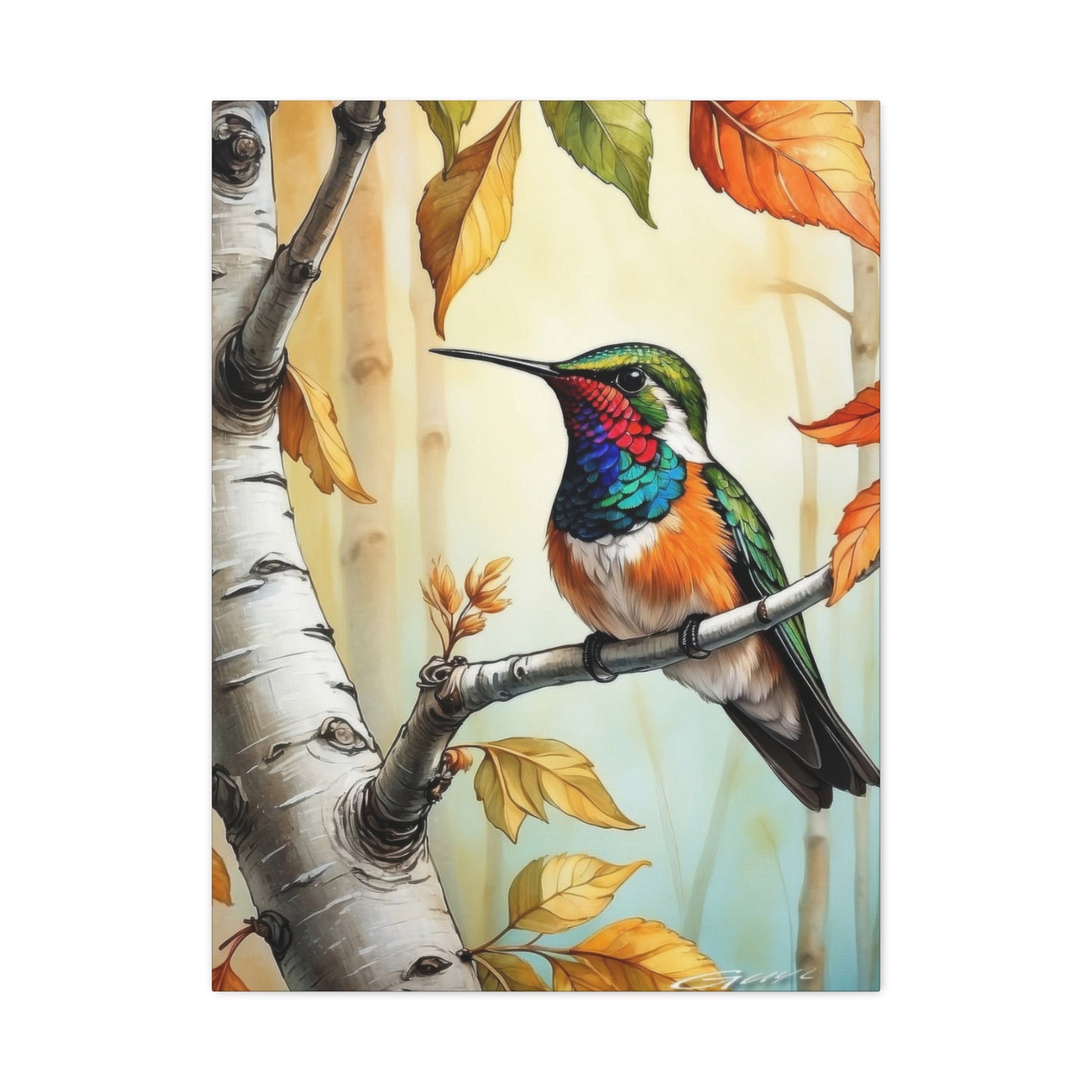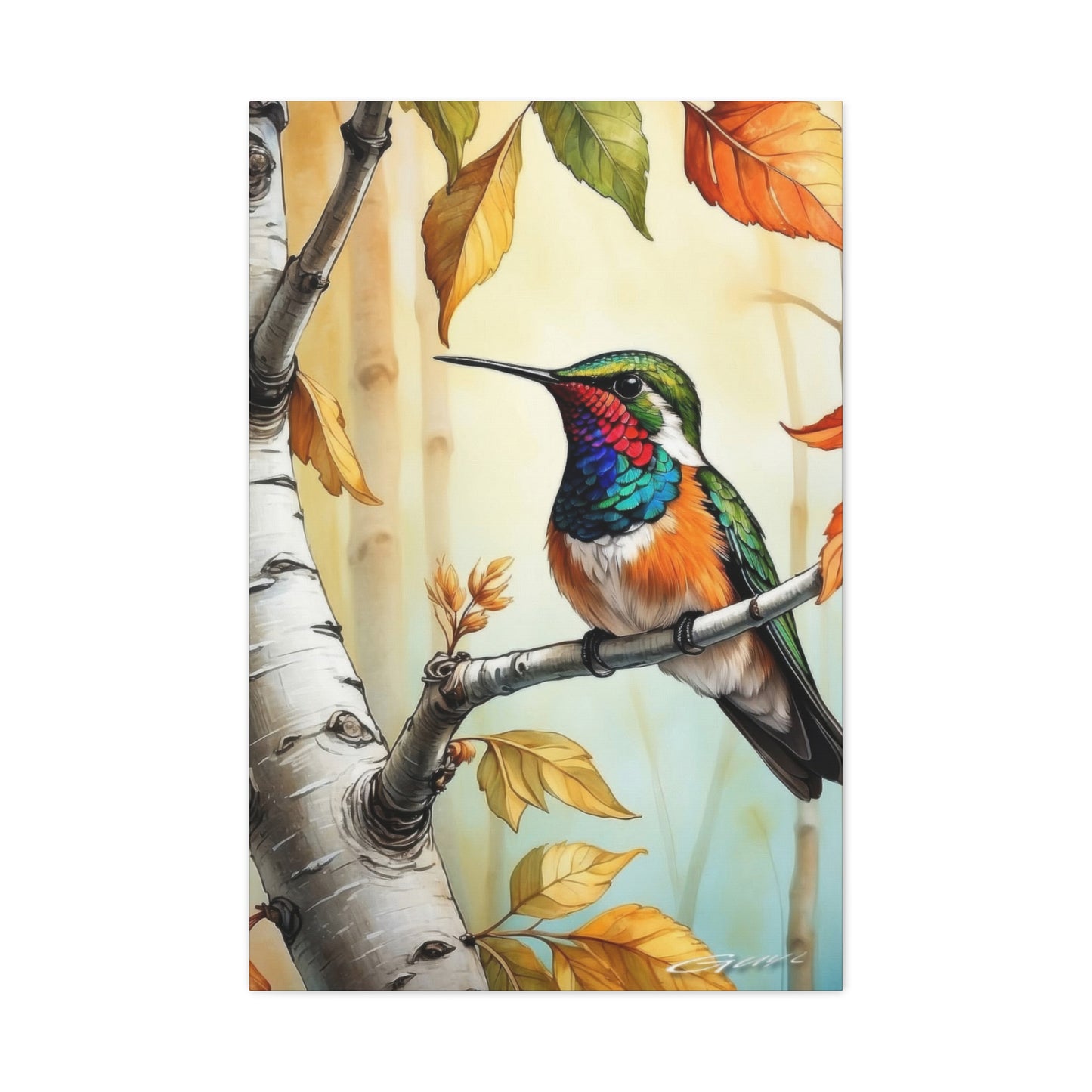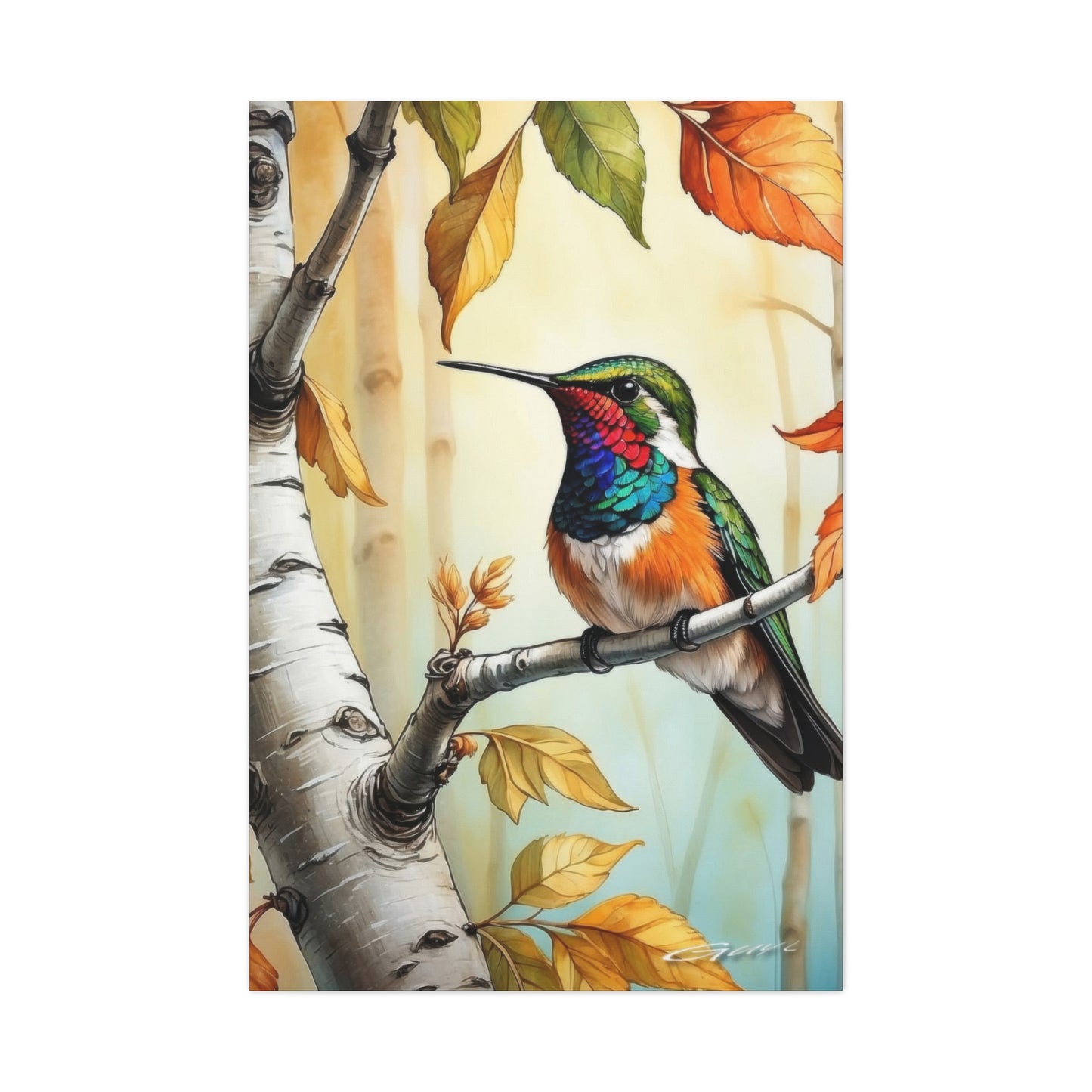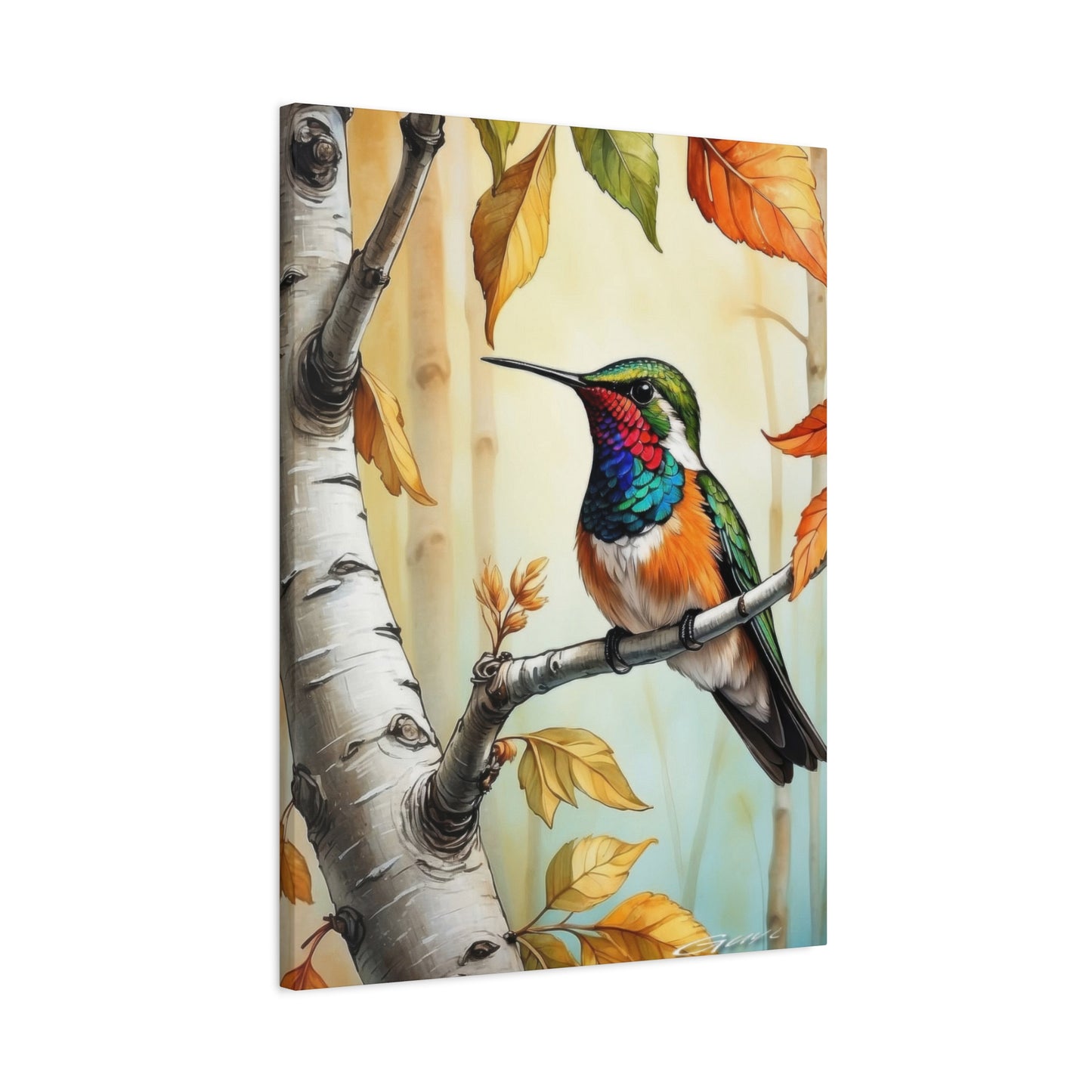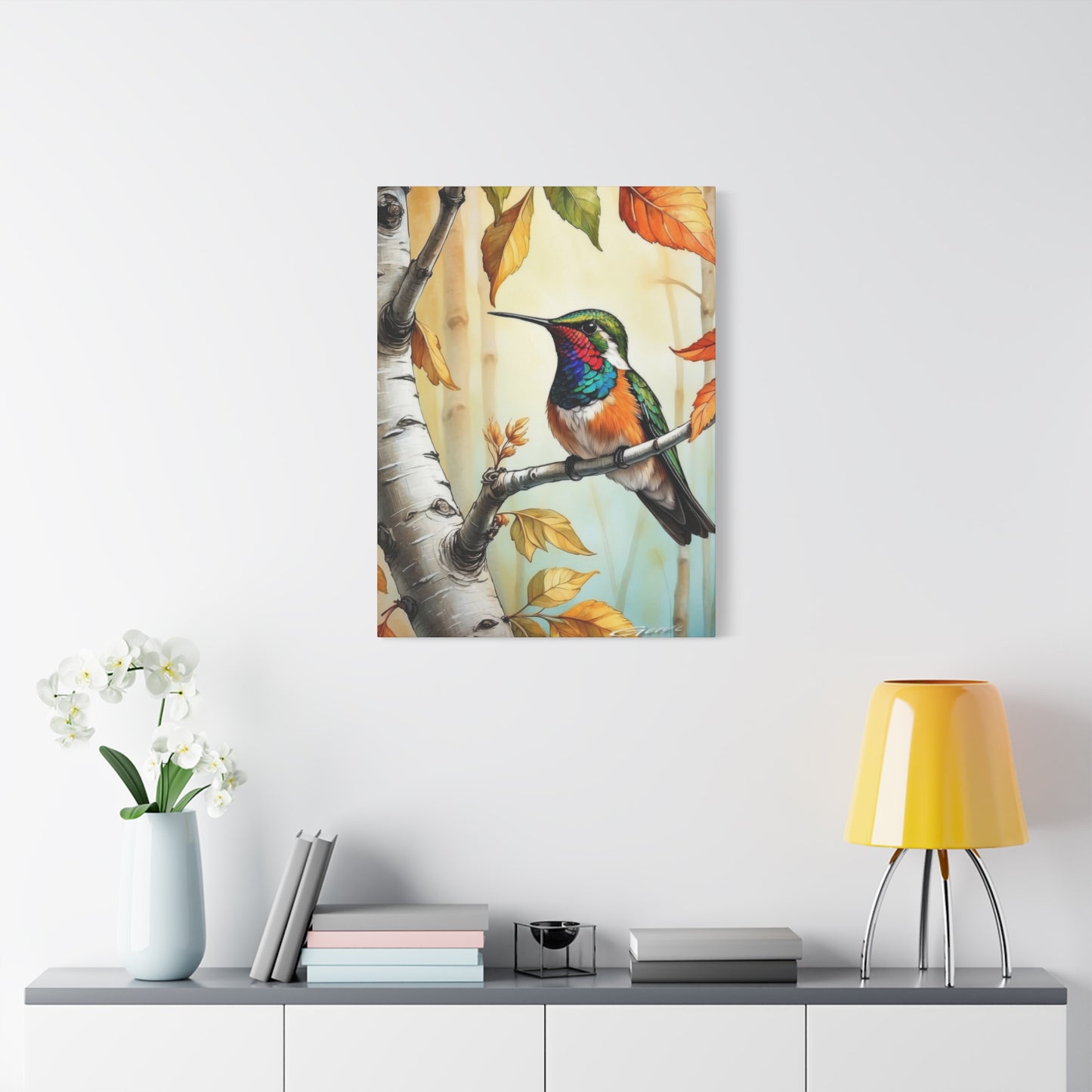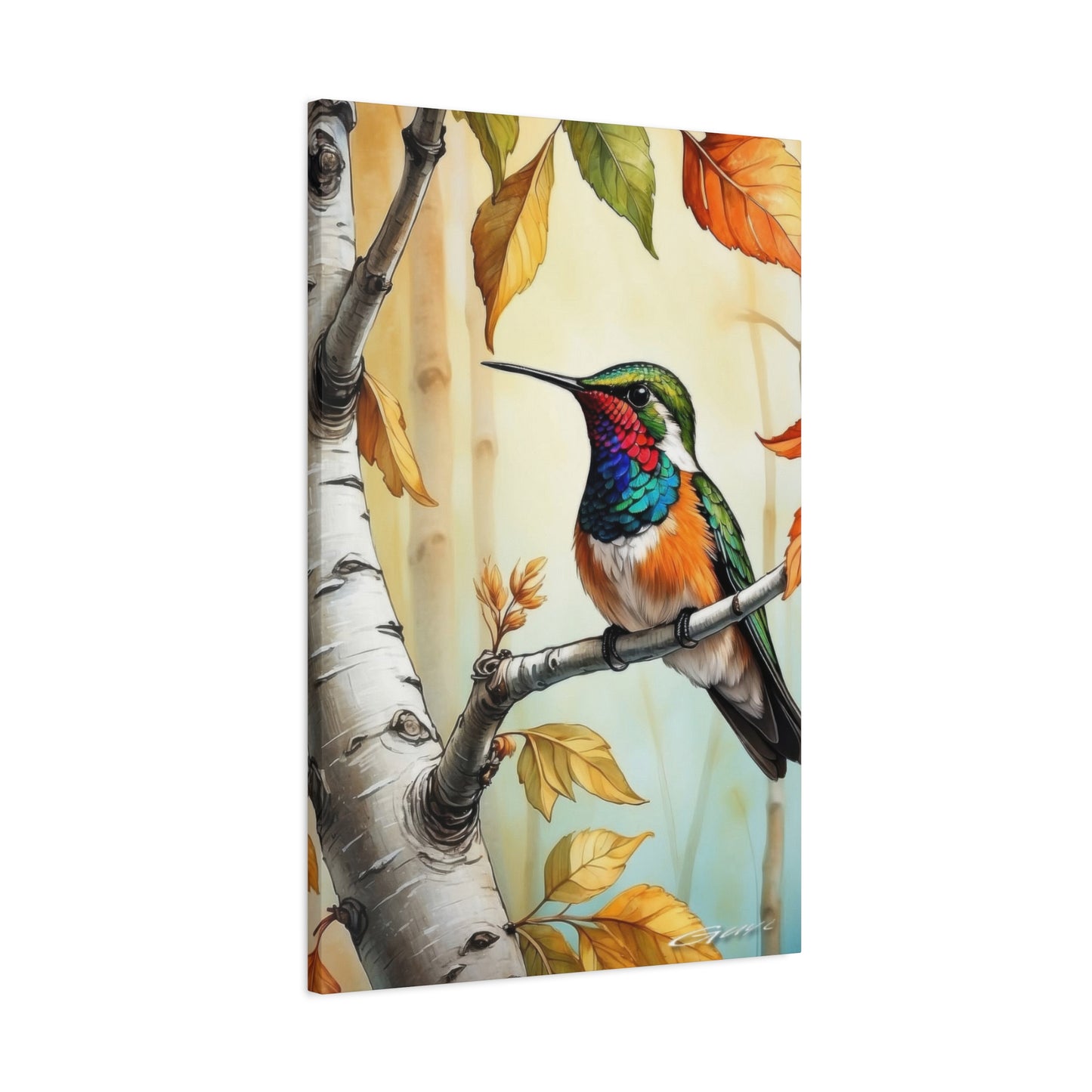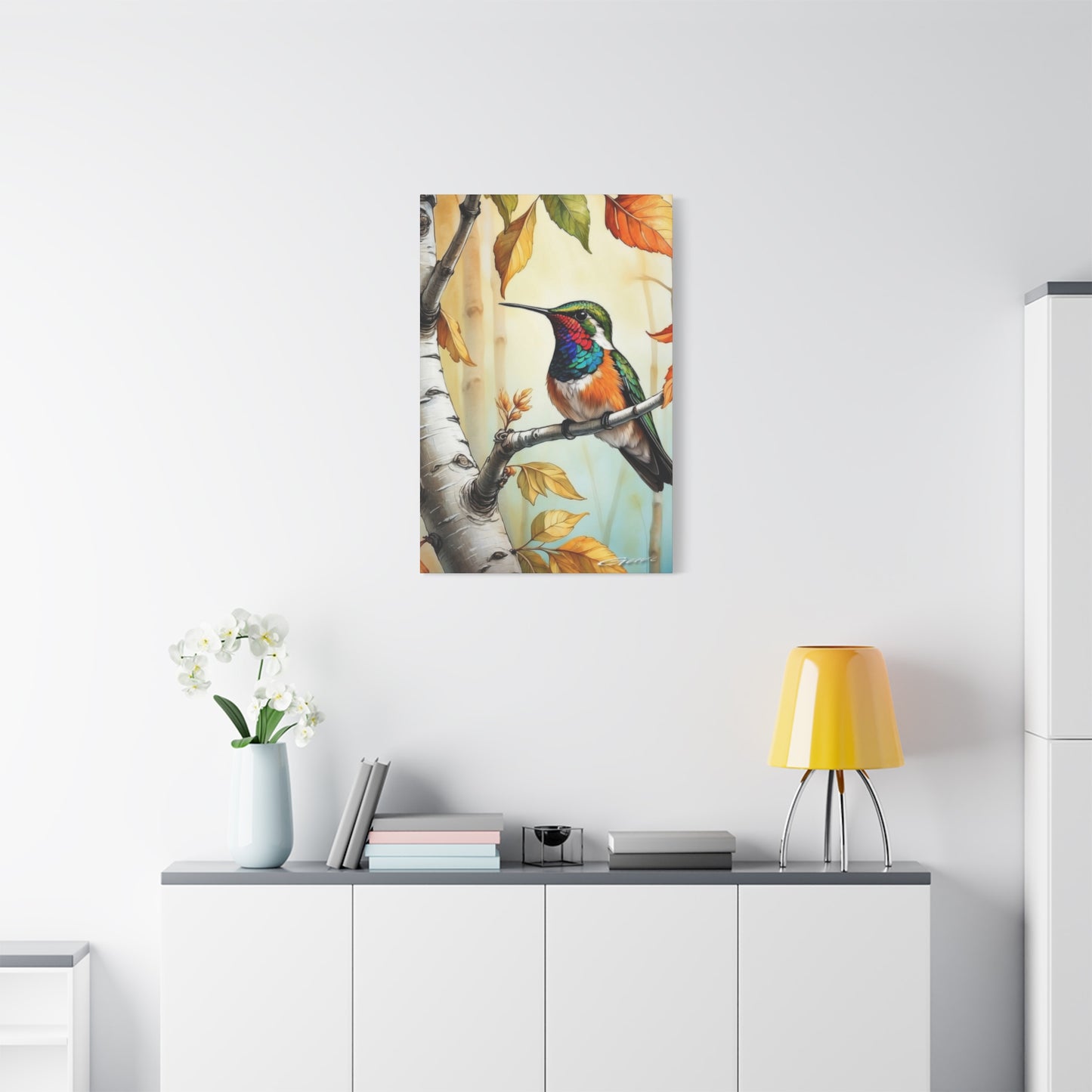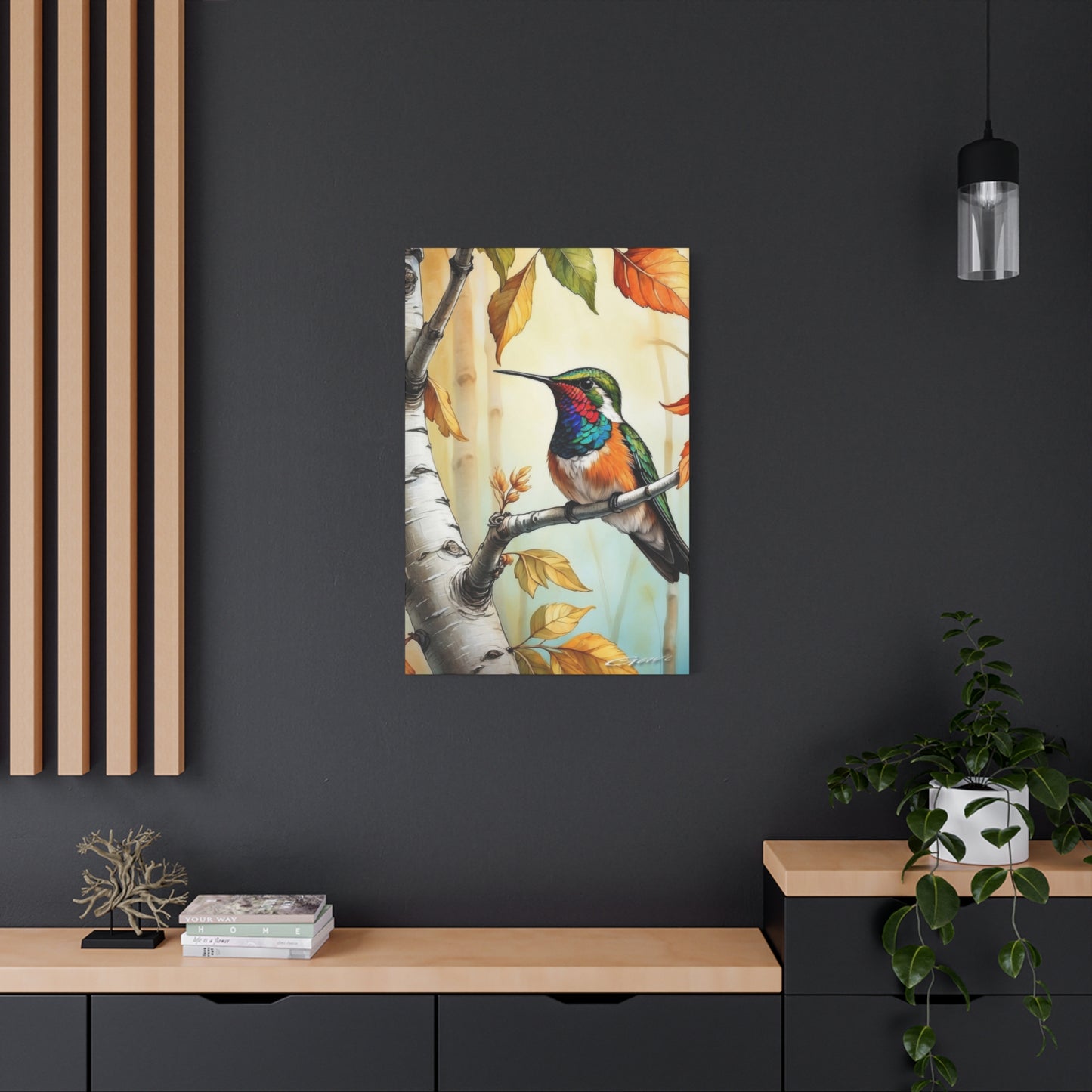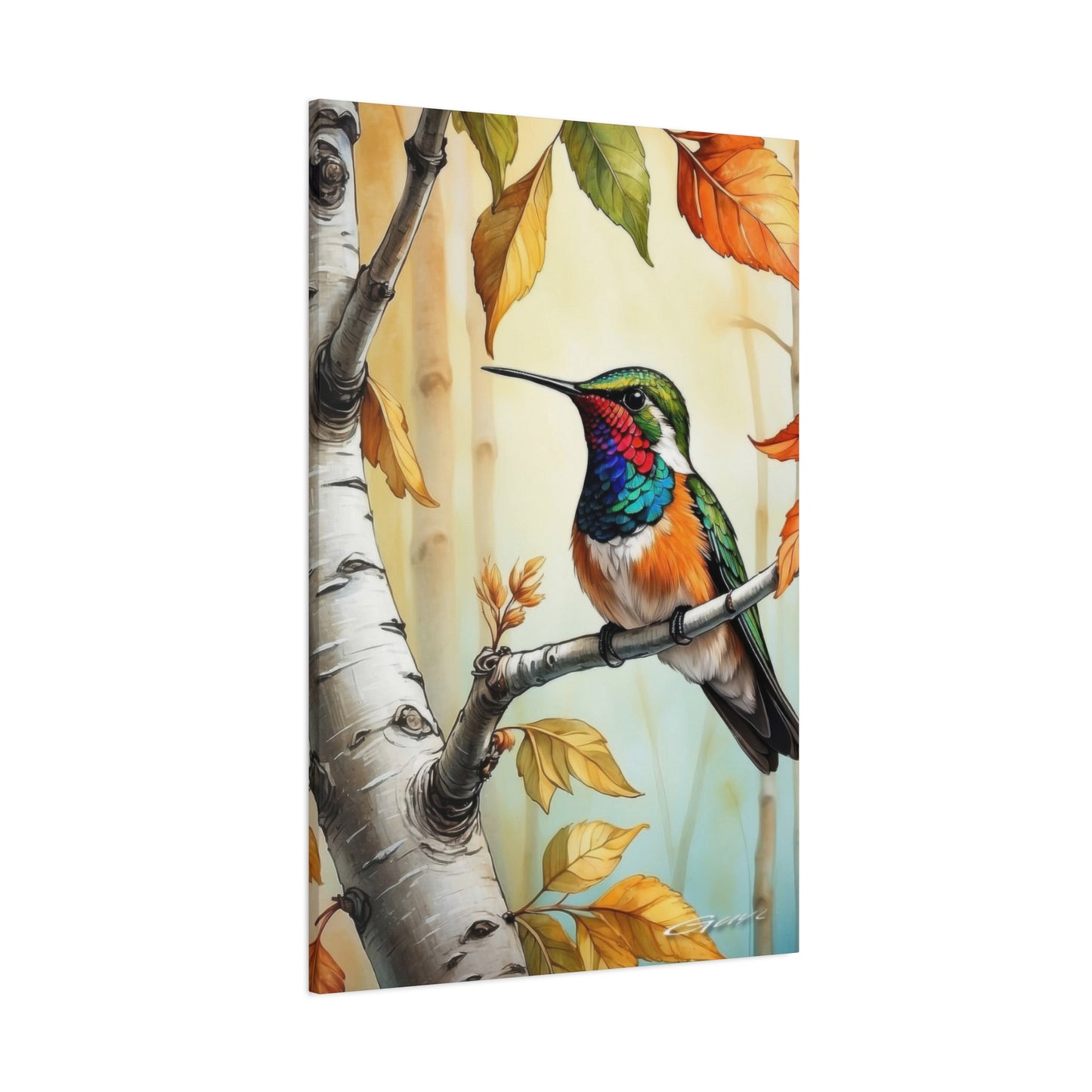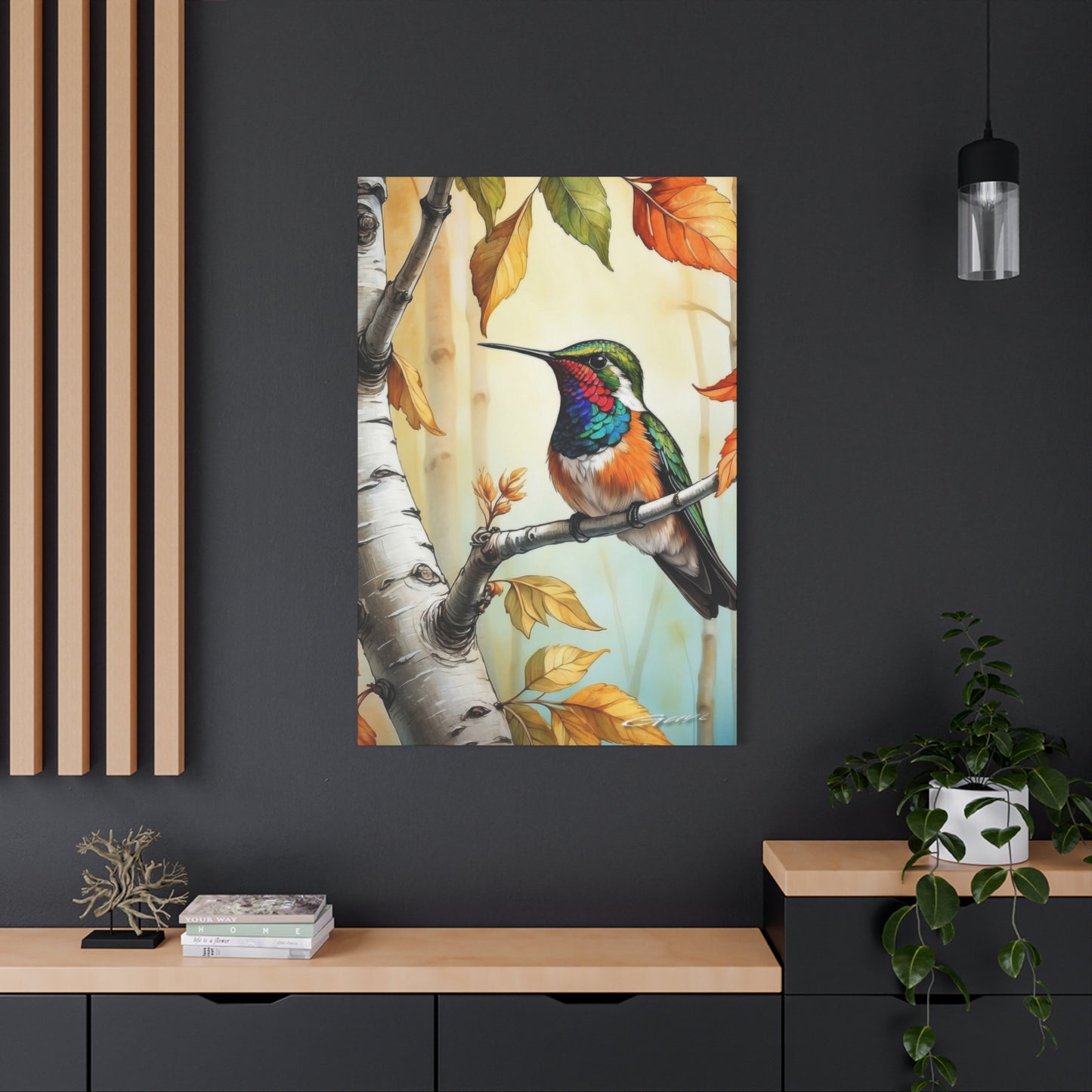Welcoming Natural Elements Into Your Home Through Bird Forest Wall Art
The desire to connect with nature while remaining indoors has become increasingly important in contemporary living spaces. Forest landscapes featuring avian subjects offer a remarkable solution for those seeking to establish this connection within their personal environments. These artistic pieces serve as windows to the natural world, allowing homeowners to experience the serenity of woodlands without leaving their comfort zones.
When you select artwork depicting birds within forested settings, you are choosing more than mere decoration. You are inviting the essence of wilderness into your daily life. The combination of leafy canopies, weathered tree trunks, and feathered creatures creates a visual narrative that speaks to our innate connection with the outdoors. This type of artistic expression has gained remarkable popularity among interior designers and homeowners alike because it addresses a fundamental human need to remain connected with natural environments.
The appeal of these artistic pieces extends beyond their visual beauty. They represent freedom, peace, and the untamed spirit of wilderness areas. Each composition tells a story of ecosystems thriving in harmony, reminding us of the delicate balance that exists in natural habitats. Whether you live in a bustling metropolitan area or a quiet suburban neighborhood, incorporating such artwork into your living spaces can transform the atmosphere entirely.
Modern interpretations of this artistic theme range from photographic realism to abstract representations. Some pieces capture specific species in their natural habitats with scientific accuracy, while others take creative liberties to convey emotional responses to nature. The diversity available ensures that every individual can find something that resonates with their personal aesthetic preferences and decorating vision.
The technical aspects of creating these artworks have evolved significantly. Artists now employ various mediums including oil paintings, watercolors, digital prints, and mixed media compositions. Each technique brings its own character and depth to the finished piece. Traditional paintings offer texture and brushstroke visibility that adds tactile interest, while high-quality prints provide affordability and accessibility without compromising visual impact.
Selecting the right piece requires consideration of several factors including size, color palette, and the specific species depicted. Larger installations can serve as focal points in spacious areas, commanding attention and setting the tone for entire rooms. Smaller pieces work beautifully in intimate spaces or as part of gallery wall arrangements where multiple artworks create a cohesive narrative.
The framing choices you make significantly influence how these artworks integrate into your existing decor. Natural wood frames complement the organic subject matter, creating seamless transitions between the artwork and its surroundings. Metal frames offer contemporary contrast, while ornate frames can add classical elegance. The matting and glazing options further protect your investment while enhancing presentation quality.
Placement considerations go beyond simple wall space availability. Lighting conditions dramatically affect how these artworks are perceived throughout the day. Natural light brings out subtle color variations and creates dynamic viewing experiences as shadows shift. Artificial lighting allows for controlled presentation and can highlight specific elements within the composition.
The psychological benefits of surrounding yourself with nature-inspired imagery have been documented in numerous studies. These artworks can reduce stress levels, improve mood, and create environments conducive to relaxation and contemplation. The presence of avian subjects specifically has been associated with feelings of freedom and optimism, making them particularly valuable additions to spaces where mental wellbeing is prioritized.
Collecting these artistic pieces can become a rewarding journey of discovery. As you become more familiar with different artists and styles, you develop a refined understanding of what speaks to your personal sensibilities. Some collectors focus on specific regions or ecosystems, building comprehensive visual documentaries of particular habitats. Others prefer eclectic collections that showcase the diversity of avian life across various forest environments worldwide.
The Symbolism of Birds and Forests
Bringing natural elements into your home is one of the most effective ways to create a calming, refreshing environment. One of the most beautiful and meaningful ways to do this is through bird forest wall art. Combining the serene presence of birds with the timeless beauty of forests, this style of wall art offers an ideal way to infuse your space with nature’s tranquility and vitality, creating a sanctuary that feels grounded and connected to the natural world.
Birds and forests are two of the most iconic symbols of nature. Forests represent life, growth, and renewal, while birds symbolize freedom, grace, and the interconnectedness of all living things. When these two elements are combined in art, they tell a story of harmony between land and sky, offering a peaceful yet vibrant visual experience that can transform any room into a natural oasis.
Birds in art often represent freedom, the power of flight, and the beauty of the natural world. They evoke a sense of lightness, movement, and joy, making them the perfect addition to a home that seeks to feel open and airy. Forests, on the other hand, symbolize rootedness, stability, and the cycles of nature. They remind us of the passage of time and the growth of life. Together, these two symbols offer a visual representation of balance—between freedom and grounding, the sky and the earth, the fleeting and the eternal.
Bird forest wall art can be created in various styles, ranging from realistic depictions of birds perched among trees to abstract representations of birds and foliage intertwined. Whether you're drawn to the gentle movement of birds in flight soaring over a lush green forest or the still beauty of birds resting in a tree’s branches, these pieces carry an inherent peacefulness that can transform a room’s atmosphere.
Bringing Tranquility into Your Space
One of the primary benefits of bird forest wall art is the tranquil, calming effect it has on a space. Forests are often associated with peace and serenity, and adding birds to the scene evokes a sense of calm movement as they flit and flutter between the branches. This sense of natural harmony can create a restful, rejuvenating atmosphere in your home, making it an ideal choice for bedrooms, reading nooks, or meditation areas.
Moreover, the natural beauty of these scenes can help reduce stress and anxiety. Research has shown that incorporating natural elements into your home, such as plants, trees, and birds, can have positive psychological effects, boosting mood and lowering stress levels. Bird forest wall art is an excellent way to harness these benefits while also enhancing your home’s aesthetic with nature-inspired decor.
Enhancing the Home’s Interior
Bird forest art works well with a variety of interior design styles. Whether you prefer a contemporary, minimalist approach or a more traditional or rustic design, the combination of birds and forests is flexible and timeless. In a modern home, a large, abstract bird forest print with bold, sweeping brushstrokes and pops of color can make a striking statement piece. In contrast, a more detailed, realistic painting of birds perched among trees might be perfect for a cozy cottage or a room with a vintage aesthetic.
For those who embrace a more bohemian or eclectic style, the organic forms and natural themes of bird forest art can help unify a room's design. A collection of smaller prints or a large mural featuring birds amidst lush foliage can tie together other nature-inspired elements, such as woven textures, plants, or earthy color palettes. The fluidity and organic lines of these artworks complement the freedom and creativity of boho interiors, creating a harmonious and inviting atmosphere.
Personalizing Your Space with Nature’s Beauty
Incorporating bird forest wall art into your home is a powerful way to infuse your living space with the calming influence of nature. This type of art, with its serene depictions of birds perched among trees or flying through woodland scenes, invites the outdoors inside, creating a harmonious balance between your home and the natural world. Whether the birds in the artwork are local species or exotic ones from faraway lands, these pieces provide a personal connection to nature, reminding you of the simple yet profound beauty that exists outside.
For many, the idea of nature is tied to nostalgic memories—morning walks through dew-covered grass, afternoons spent beneath the shade of ancient trees, or listening to birds sing from the branches above. These experiences, rich with peaceful solitude or quiet joy, can be brought into your home through the lens of art. Bird forest wall art allows you to relive these moments and invites the tranquil essence of the natural world into your everyday surroundings. Every glance at the artwork becomes an opportunity to reconnect with nature, even when you’re inside your home, surrounded by the bustle of daily life.
Nature-inspired art can be highly personal, depending on your relationship with the outdoors. If you have a deep connection to a particular forest or enjoy birdwatching in your local park, you may find joy in artwork that reflects these familiar places and creatures. On the other hand, if you're drawn to the idea of faraway landscapes, exotic birds, or mythical forests, these pieces can evoke a sense of wonder and exploration, expanding your mental landscape and offering a retreat into a more imaginative, far-off place.
The therapeutic effects of nature-inspired art are well-documented. Studies have shown that nature exposure, even in an indirect form like visual art, can significantly reduce stress, enhance mood, and improve overall mental health. When you surround yourself with images of forests and birds, you essentially bring nature’s calming influence into your home. The colors, textures, and life depicted in bird forest scenes offer a gentle reminder of the natural cycles of life—growth, renewal, peace—and can help alleviate the anxiety and pressure of modern life.
Bird forest wall art has a unique ability to promote relaxation and mindfulness. The intricate details of a bird in flight, the soft rustle of leaves, and the tranquility of a forest scene invite a meditative state, encouraging you to pause and take a deep breath. In a fast-paced world where we often find ourselves rushing from one task to the next, these calming images can encourage us to slow down and appreciate the present moment.
Moreover, these pieces can stimulate creativity and inspire new ways of thinking. Just as nature thrives through diversity—different trees, birds, and ecosystems—the presence of nature in your space can encourage you to embrace different perspectives and creative solutions. Whether you’re looking for inspiration for a project or simply need a peaceful escape, nature-themed art has a way of sparking curiosity and imagination.
The healing power of nature-inspired art also extends to the home’s atmosphere. A living space adorned with bird forest artwork can create an environment that fosters well-being and positivity. As the art interacts with natural light, shifting throughout the day, it can alter the mood of the room, making it feel lighter, more open, and more connected to the rhythms of the earth. Whether displayed in a living room, study, or bedroom, these pieces can help transform any room into a sanctuary where you feel at ease and in tune with nature.
Incorporating bird forest wall art into your space doesn’t just enhance the visual appeal—it creates an atmosphere that nurtures your soul. It serves as a visual reminder to appreciate life’s simple joys and reconnect with the tranquility that nature offers. By bringing these serene landscapes into your home, you’re not just decorating a space; you’re inviting a constant, healing presence that encourages mindfulness, creativity, and overall well-being.
The Therapeutic Power of Nature-Inspired Art
Continuing from the therapeutic impact of bird forest wall art, the integration of these nature-inspired pieces can also influence the overall energy of your space. Nature has a grounding effect—its rhythms, cycles, and patterns are predictable, offering a sense of stability and reassurance. This grounding energy can help to balance out the more chaotic or high-energy elements within a home, creating a serene environment that feels restorative. Whether you place the artwork in a central location or as a quiet accent piece, the calm energy it brings can shift the mood of the entire room.
In addition to their calming effects, bird forest wall art can foster a deeper connection to environmental consciousness. As we become more aware of the importance of sustainability and ecological balance, nature-inspired art serves as a reminder of our relationship with the planet. The birds, trees, and landscapes depicted in these artworks symbolize the beauty that exists in the world—and also the delicate ecosystems that need protection. By incorporating this type of art into your home, you may find yourself more attuned to the rhythms of the earth, fostering a greater appreciation for conservation and the natural world around you.
The aesthetic value of bird forest wall art is not just about the calming scenes they evoke but the rich textures, colors, and contrasts that bring them to life. These artworks often use vibrant greens, earthy browns, and soft blues, making them versatile in a variety of interior design styles. Whether your space leans towards bohemian, rustic, or even modern minimalist aesthetics, bird forest prints can blend seamlessly into the backdrop while adding a natural flair that enhances the overall decor. They provide a focal point without overwhelming the space, making them perfect for creating an ambiance of tranquility in any room.
What makes bird forest art particularly unique is its ability to speak to different emotional and sensory experiences. Some pieces capture the quiet moments in nature—birds resting peacefully among trees, sunlight filtering through branches, or mist rising from the forest floor—while others might showcase more vibrant, active scenes of birds in flight, rushing rivers, or dynamic, dense forests. This variety allows you to choose artwork that not only aligns with your aesthetic preferences but also reflects the emotional tone you wish to create. For instance, a soft, serene forest scene might be perfect for a bedroom or meditation space, while a lively depiction of birds in flight might suit a living room or creative workspace.
Customizing your space with nature-inspired art can also reflect personal milestones or significant experiences. Perhaps a particular bird species reminds you of a meaningful trip or an afternoon spent in the woods with family. This personal connection to the artwork makes it even more significant, as it becomes a visual representation of cherished memories, reminding you of the places, people, and experiences that have shaped your life. This infusion of personal meaning into your home decor adds depth and individuality, transforming the space into a sanctuary that reflects your journey and values.
Bird forest wall art can also help create a sense of continuity and unity within your home. Nature operates in cycles—growth, decay, renewal—each season offering new life and perspectives. Having this visual representation of nature’s perpetual cycle in your home can serve as a reminder of life's ebbs and flows. Just as trees grow and birds migrate with the seasons, you too can embrace change, growth, and transformation. It can encourage you to view challenges as part of your own personal growth, rather than as obstacles, and to celebrate moments of renewal and change.
Finally, integrating bird forest art into your home is not just about aesthetics or therapy—it's about inviting the soul-soothing presence of nature into your everyday life. It’s about the moments of stillness when you pause to admire the artwork, the subtle shifts in mood when you enter a room, and the quiet inspiration that bubbles up when you connect with nature’s beauty. As we navigate the demands of modern life, having reminders of nature’s tranquility within arm’s reach can act as a powerful counterbalance, encouraging us to slow down, reconnect, and appreciate the world around us. By infusing your space with bird forest art, you create a sanctuary that nurtures your well-being, enhances creativity, and helps foster a deeper connection to the natural world.
The Peaceful Atmosphere Created by Bird Forest Wall Art in Home Environments
Establishing peaceful environments within our homes has become essential for maintaining balance in increasingly hectic modern lives. Artwork depicting avian life within forested landscapes offers exceptional capabilities for creating these tranquil atmospheres. The inherent calmness of woodland scenes combined with the graceful presence of birds produces visual experiences that soothe the mind and ease tension.
The science behind why these images promote relaxation relates to biophilic design principles. Humans possess innate connections to natural environments that developed over millennia. When we surround ourselves with representations of nature, our physiological responses include lowered heart rates, decreased cortisol levels, and improved cognitive function. The specific combination of trees and birds triggers multiple positive associations simultaneously, amplifying these beneficial effects.
Color psychology plays a significant role in the tranquil qualities of these artworks. Forest scenes typically feature predominant greens and browns, colors associated with growth, stability, and grounding. These earth tones create foundational calmness, while the birds introduce accent colors that add visual interest without overwhelming the composition. Blues in sky glimpses or water features contribute additional serenity, while warm tones in sunrise or sunset scenes add gentle energy.
The compositional elements within these artworks guide the viewer's eye through the scene in ways that encourage meditative observation. Leading lines created by tree trunks or branches direct attention deeper into the composition, inviting extended viewing. The placement of avian subjects at strategic points creates focal areas that reward careful examination. This structured yet organic arrangement mirrors the organized complexity found in actual forest ecosystems.
Scale relationships within the artwork affect the emotional response they generate. Pieces showing birds dwarfed by massive ancient trees evoke feelings of awe and humility, reminding viewers of nature's grandeur. Compositions featuring birds as prominent subjects with forest backgrounds suggest harmony between individual creatures and their environments. These different approaches to scale allow you to select pieces that align with the specific mood you wish to establish.
The temporal quality suggested by these artworks contributes to their calming influence. Forest scenes inherently communicate the passage of time through growth rings, seasonal changes, and the life cycles of depicted creatures. This reminder of nature's rhythms helps us gain perspective on our own daily concerns, recognizing them as moments within much larger continuums. Such perspective naturally reduces anxiety and promotes acceptance.
Textures visible in quality reproductions or original works add tactile dimensions that enhance engagement. The rough bark of ancient trees contrasts with the delicate feathers of birds, creating visual interest that holds attention without demanding it. These textural variations prevent the artwork from becoming mere background decoration, instead offering opportunities for repeated discovery and appreciation.
The auditory associations triggered by these visual representations should not be underestimated. Viewers familiar with forest environments unconsciously recall the sounds of rustling leaves, bird songs, and wind through branches when observing these images. These mental soundscapes complement the visual tranquility, creating multisensory experiences that transcend the physical limitations of static imagery.
Lighting interactions with these artworks throughout the day create dynamic living installations. Morning light filtering through window coverings might illuminate a sunrise scene depicted within the piece, creating harmonious continuity between your actual environment and the represented landscape. Evening shadows can add mystery and depth, transforming familiar images into new experiences worth contemplating.
The absence of human elements in most forest and bird compositions reinforces their peaceful qualities. Without figures or structures to remind us of social complexities and urban stresses, we can fully immerse ourselves in the natural scene. This temporary escape provides mental restoration necessary for maintaining overall wellbeing in demanding contemporary lifestyles.
Negative space within these compositions serves important functions in creating tranquil atmospheres. Areas of sky visible through canopy gaps or clearings in forest understory provide visual breathing room that prevents overwhelming density. These open areas allow the eye to rest, contributing to the overall sense of spaciousness and calm that well-composed pieces project.
The timeless quality of nature scenes means these artworks never feel dated or trendy. Unlike pieces featuring contemporary cultural references or design fads, forest and bird imagery maintains relevance across decades. This enduring appeal makes them safe investments for those who prefer stable, long-term decorating solutions rather than frequently updating their spaces to follow changing fashions.
Pairs or series of related pieces can create gallery walls that amplify the tranquil effects. Multiple views of the same forest at different times or various bird species within similar settings build immersive environments that transport viewers mentally into the depicted wilderness. The cumulative effect of several complementary pieces exceeds what any single artwork could achieve alone.
The meditative potential of these artworks makes them particularly valuable in dedicated relaxation spaces. Whether you create a reading nook, meditation corner, or yoga area, the appropriate forest and bird imagery reinforces the intended purpose of these zones. The artwork becomes more than decoration, functioning as a tool supporting your wellness practices and self-care routines.
Seasonal affective patterns can be addressed through strategic selection of these artworks. During darker winter months, pieces featuring brighter palettes and abundant life can counteract the dreariness of reduced daylight. Summer might call for cooler-toned compositions that visually refresh spaces. This intentional alignment between artwork mood and seasonal needs demonstrates sophisticated understanding of how visual elements affect our daily experiences.
Children respond particularly well to the calming qualities of these artistic themes. Unlike abstract or culturally complex imagery that might confuse or overstimulate young minds, forest and bird scenes offer accessible beauty that engages without overwhelming. These pieces can help establish bedroom environments conducive to peaceful sleep and provide focal points that encourage quiet contemplation during rest times.
Perfect Artistic Choices for Those Who Cherish Natural Environments
Individuals who feel deep connections to wilderness areas and wildlife find particular satisfaction in surrounding themselves with artistic representations of these passions. Artwork featuring birds within forest settings speaks directly to these sensibilities, offering daily reminders of what matters most to them. For the true nature enthusiast, these pieces transcend mere decoration, becoming expressions of identity and values.
The specificity available in this artistic category allows collectors to celebrate particular interests. Birdwatchers might seek pieces featuring rare species they have observed during memorable expeditions. Those passionate about specific ecosystems can acquire works depicting the forests they have explored, creating visual documentaries of their outdoor experiences. This personal relevance transforms the artwork into meaningful possessions rather than generic home accessories.
Education and awareness form important components of what draws nature lovers to these artistic expressions. Many pieces highlight conservation concerns, threatened habitats, or endangered species, keeping these issues visible in daily life. The artwork becomes a conversation starter, allowing owners to share their environmental concerns with guests and potentially inspiring others to develop greater appreciation for natural world protection needs.
The authenticity valued by serious nature enthusiasts requires artists who understand their subjects deeply. Works created by individuals who spend significant time observing wildlife and studying ecosystems possess qualities that resonate with knowledgeable viewers. These informed creations capture subtle behaviors, accurate anatomical details, and genuine habitat characteristics that distinguish them from generic nature imagery produced without true understanding.
Field guide accuracy in some pieces appeals to those who appreciate scientific precision. These works function as beautiful representations while maintaining ornithological correctness in plumage patterns, body proportions, and behavioral poses. Such attention to detail satisfies both aesthetic and intellectual interests, making the artwork valuable on multiple levels.
The emotional connections nature lovers form with specific locations find expression through regionally specific artwork. A piece depicting the pine forests and resident bird species of a beloved mountain retreat becomes more than attractive imagery. It serves as a portal to cherished memories and a tangible connection to places that hold spiritual or personal significance.
Seasonal migrations documented in sequential artworks can tell dramatic stories of survival and determination. Following the same species from breeding grounds through migration routes to wintering areas creates narrative arcs that appeal to those fascinated by the incredible journeys birds undertake. These series educate while inspiring awe at the capabilities of seemingly fragile creatures.
The intersection of art and citizen science appears in works that document declining species or changing habitats. Some contemporary artists focus their efforts on creating visual records of biodiversity before it disappears, driven by conservation urgency. Collectors who support these efforts through purchases contribute directly to documentation and awareness campaigns while acquiring meaningful artwork.
Original field sketches by naturalist artists possess unique appeal for serious enthusiasts. These working drawings, created during actual observation sessions, capture immediate impressions and authentic moments. Though perhaps less polished than finished studio works, they convey energy and spontaneity that resonates with those who understand the challenges and rewards of observing wildlife in natural settings.
The community aspect of collecting nature-focused artwork should not be overlooked. Galleries, exhibitions, and artist studios become gathering places where like-minded individuals connect. Shared appreciation for these artistic expressions builds relationships and networks that extend beyond the artwork itself, creating communities united by common values and interests.
Supporting artists who donate portions of their sales to conservation organizations allows collectors to extend their impact beyond personal enjoyment. This philanthropic dimension adds meaning to acquisitions, knowing that the purchase contributes to protecting the very subjects and habitats depicted. Many nature-focused artists maintain strong relationships with environmental nonprofits, creating direct connections between art sales and conservation work.
The technical skills required to create convincing nature artwork earn respect from those who understand the challenges involved. Capturing the play of light through forest canopies, rendering the complex textures of feathers and bark, and conveying the essence of wild creatures demand both artistic talent and deep subject knowledge. Appreciation for these technical achievements deepens the collector's relationship with acquired pieces.
Documentary projects by photographers and painters who spend extended periods in specific ecosystems produce comprehensive bodies of work worth following. Collecting pieces from these projects allows you to build cohesive representations of particular regions or habitat types. The depth of understanding evident in these focused efforts appeals to those who value thorough exploration over superficial surveys.
Enhancing Living Room Spaces with Bird Forest Wall Art
The living room serves as the social heart of most homes, making it the ideal location for statement artwork that reflects your personality and creates conversation. Incorporating pieces that showcase birds within forest environments brings natural beauty into this central gathering space while offering numerous design advantages. These artistic choices transform ordinary living areas into distinctive environments that guests remember and occupants cherish.
Scale considerations become paramount when selecting artwork for living rooms, which typically feature the largest uninterrupted wall surfaces in residential spaces. Oversized single pieces make dramatic statements, immediately drawing attention and establishing the room's aesthetic direction. A commanding forest scene spanning five or six feet across becomes the dominant visual element around which other design decisions revolve. This bold approach suits confident decorators willing to build entire rooms around single powerful artworks.
Alternatively, gallery wall arrangements allow for more flexible compositions using multiple smaller pieces. Combining various bird species, different forest scenes, or mixed media approaches creates dynamic installations that reward extended viewing. The arrangement itself becomes an art form, with spacing, alignment, and visual flow requiring careful consideration. Successful gallery walls featuring nature themes build narratives that guide viewers through curated visual experiences.
Color coordination between the artwork and existing living room elements ensures cohesive rather than jarring results. If your space features warm wood tones in flooring or furniture, selecting pieces that emphasize similar warmth creates harmonious continuity. Cooler color schemes in contemporary spaces might call for artwork featuring foggy forest scenes or twilight settings. This intentional alignment prevents the artwork from feeling like an afterthought and instead integrates it as a deliberate design component.
Furniture placement responds to major artwork installations. Sofas positioned to face impressive forest and bird compositions allow comfortable viewing during conversation or relaxation. The artwork becomes a focal point that anchors seating arrangements and influences traffic flow through the space. This functional aspect of art placement often receives insufficient attention during design planning, yet significantly affects how the room actually functions in daily use.
Lighting specifically directed at featured artwork dramatically enhances its impact while adding ambient illumination to the living area. Picture lights, track lighting, or recessed fixtures positioned to spotlight the piece without creating glare require professional planning but deliver professional results. The interplay of light and shadow across textured surfaces in paintings adds dimensional interest, while proper illumination prevents glazed prints from washing out or reflecting room lighting awkwardly.
The architectural features of your living room influence optimal artwork selection. High ceilings accommodate vertically oriented pieces that emphasize tall trees and upward-looking perspectives. Horizontal spaces above sofas or media centers suit panoramic forest scenes or multiple pieces arranged in horizontal sequences. Fireplace surrounds, though challenging due to heat concerns, can incorporate artwork when proper precautions protect the pieces from damage.
Textural relationships between the artwork and surrounding materials create sophisticated layering. A roughly textured painting mounted against smooth plaster walls generates appealing contrast. Glossy prints behind glass might complement polished surfaces in contemporary settings. These tactile considerations, though subtle, contribute to overall design refinement and demonstrate attention to detail that elevates spaces from adequate to exceptional.
Seasonal rotation possibilities add versatility to living room art programs. Maintaining a collection that includes various seasonal forest scenes allows you to refresh the room's appearance quarterly without complete redecorating. Spring nesting scenes brighten the space as days lengthen, while autumn migrations complement the return of cooler weather. This practice keeps the living environment dynamic and responsive to natural cycles.
The conversation-starting potential of nature artwork in social spaces should be maximized through strategic selection. Pieces featuring unusual species, dramatic moments, or particularly stunning compositions give guests something specific to comment on and discuss. These interactions move beyond generic compliments about nice decorating into substantive conversations about nature, conservation, or artistic merit.
Balancing the artwork's presence with other focal points prevents visual competition. If your living room features a striking view through large windows, the artwork should complement rather than compete with this natural focal point. Similarly, impressive architectural details, statement furniture pieces, or technology centers need consideration during artwork selection to ensure all elements coexist harmoniously rather than fighting for attention.
The investment nature of living room artwork justifies more substantial expenditures compared to lesser-viewed areas. Since this space receives maximum visibility from both residents and visitors, quality becomes particularly important. Original works, limited editions, or custom commissions appropriate for living rooms demonstrate taste and commitment to creating exceptional environments rather than merely adequate ones.
The Deeper Meanings Behind Birds in Forest Wall Art
Throughout human history and across diverse cultures, birds have carried profound symbolic significance that extends far beyond their physical beauty. When depicted within forest settings, these meanings amplify and intertwine with woodland symbolism, creating layered artistic statements that communicate on multiple levels. Understanding these symbolic dimensions enhances appreciation for the artwork while adding intellectual depth to what might otherwise remain purely decorative choices.
Freedom stands as perhaps the most universal symbolism associated with birds. Their ability to take flight represents liberation from earthly constraints, making them natural metaphors for independence, escape, and transcendence. Within the confining walls of buildings, artwork depicting this freedom reminds us of possibilities beyond our immediate circumstances. This aspirational quality appeals particularly to those who feel constrained by routines or responsibilities, offering visual affirmation that broader horizons exist.
Messenger roles appear in numerous cultural traditions, with birds serving as intermediaries between terrestrial and celestial realms. This communicator symbolism suggests connection to higher consciousness, spiritual awareness, and divine guidance. Forest settings ground these ethereal creatures in tangible reality, creating bridges between material and spiritual dimensions. Art featuring birds in woodland contexts therefore suggests balance between practical life and transcendent aspirations.
Seasonal symbolism embedded in bird and forest imagery speaks to cycles of death, rebirth, transformation, and continuity. Spring scenes depicting nesting pairs suggest new beginnings and creative partnerships. Autumn compositions showing migratory preparations acknowledge necessary endings and the courage required for transitions. These temporal layers add philosophical depth that invites contemplation beyond surface beauty.
Species-specific symbolism allows for personalized meaning in artwork selection. Owls traditionally represent wisdom and intuition, making them appropriate choices for studies or meditation spaces. Cardinals symbolize vitality and passion in many traditions, suitable for areas where energy and enthusiasm are desired. Eagles convey power and vision, while smaller songbirds might represent joy and community. Understanding these associations enables intentional communication through artistic choices.
Forest symbolism intertwines with avian meanings to create compound messages. Woods represent mystery, growth, refuge, and the unconscious mind in various interpretive frameworks. Combined with bird imagery, forest settings might suggest finding freedom within structure, discovering wisdom through nature connection, or navigating life's complexities with grace. These merged symbols resonate with viewers on conscious and subconscious levels.
Color symbolism within bird and forest compositions adds another interpretive layer. Vibrant plumage against muted forest backgrounds suggests the importance of maintaining individuality within conforming environments. Camouflaged birds barely distinguishable from their surroundings might represent adaptation, protection, or the value of subtlety. These color relationships communicate concepts without requiring explicit representation.
Native and indigenous perspectives on bird symbolism offer rich alternative interpretations often overlooked in Western analysis. Many traditions view specific birds as clan totems, spiritual guides, or embodiments of ancestral wisdom. Artwork created from or respecting these perspectives carries cultural weight that transcends aesthetic value, demanding respectful understanding from collectors outside these traditions.
The tree of life concept appears repeatedly in artistic traditions worldwide, with birds often depicted among branches representing the interconnection of all existence. This motif suggests unity, interdependence, and the sacred nature of life itself. Contemporary environmental interpretations extend this symbolism to emphasize ecological responsibility and the recognition that human wellbeing depends on healthy natural systems.
Adding Visual Dimension and Interest to Any Room Through Bird Forest Art
The spatial qualities of artwork significantly impact how rooms feel and function, extending beyond mere two-dimensional decoration into architectural influence. Pieces featuring forest scenes with bird subjects possess unique capabilities to enhance perceived depth, create focal interest, and transform flat walls into windows onto complex environments. Understanding these spatial dynamics allows strategic deployment of artwork to address specific design challenges and opportunities.
Perspective techniques employed in forest compositions naturally draw viewers into depicted scenes. Leading lines formed by receding tree trunks guide the eye deeper into the composition, creating the illusion that the wall surface has disappeared. This perceptual trick makes rooms feel larger than their actual dimensions by suggesting continuation beyond physical boundaries. Small spaces particularly benefit from this dimensional expansion that artwork provides without requiring structural changes.
Layering within compositions contributes to depth perception through foreground, middle ground, and background distinctions. Birds positioned in the nearest plane establish immediate visual entry points, while forest elements at various distances create the sense of navigable space. This staged arrangement mimics how we perceive actual environments, triggering psychological responses similar to being in expanded areas rather than confined rooms.
Atmospheric perspective techniques using color and clarity variations enhance three-dimensional illusion. Distant forest elements rendered in lighter, cooler, less detailed forms suggest recession into space, while vivid, warm, sharply defined foreground elements project forward. These gradations create depth without requiring physical relief or sculptural projection, achieving dimensional effects through purely pictorial means.
The frame itself functions as architectural element when properly selected and installed. Deep shadow box frames create actual physical depth, separating the artwork from the wall surface and enhancing its object-like presence. This three-dimensional mounting transforms flat prints into sculptural installations that cast shadows and respond to viewing angles, increasing visual complexity and interest.
Multiple pieces arranged at varying depths create installation-wide dimensional play. Some artworks hung flush to walls while others project forward on standoffs or shelves build relief patterns across the installation zone. This varied depth approach adds architectural texture to otherwise flat wall surfaces, creating installations that reward viewing from multiple angles as relationships between pieces shift with position changes.
The scale relationships between depicted elements affect perceived depth dramatically. Compositions showing massive ancient trees with small birds emphasize vast spatial extent, suggesting the viewer could walk deep into the represented forest. Conversely, intimate scenes with prominent bird subjects and background forest minimize depth perception, creating focused vignettes rather than expansive vistas. Selecting appropriate scale relationships allows you to either expand or contain the perceived space.
Reflection and transparency elements in glazed artwork add literal dimensional complexity through their interaction with room lighting and reflection of opposite spaces. Glass surfaces become semi-mirrors at certain angles, overlaying room reflections onto the depicted forest scene. This merging of actual and represented space creates intriguing perceptual moments that demonstrate the artwork's integration into the physical environment.
Triptych and multi-panel compositions use physical separation between sections to build dimensional interest. The gaps between panels create rhythm and acknowledge the wall surface while the continuous scene spanning panels suggests unified space. This tension between separation and unity adds conceptual depth complementing the visual depth within individual panels.
Conclusion:
There’s an undeniable magic in the connection between birds and trees—two elements of nature that, when combined in art, create a harmonious visual representation of peace, freedom, and vitality. Bird Forest Wall Art allows you to bring the outdoors inside, inviting the calming influence of nature into your living space. With the vibrant beauty of birds soaring through a lush forest, this type of artwork evokes a sense of tranquility, connection to nature, and renewal. Whether you're drawn to the symbolism of birds or the timeless beauty of forests, bird and forest-themed wall art is a perfect way to create a serene, welcoming atmosphere in your home.
One of the most powerful aspects of Bird Forest Wall Art is its ability to encapsulate the essence of nature in a way that is both visually stunning and emotionally resonant. Birds, symbols of freedom, transformation, and hope, contrast beautifully against the strength and stability of trees, representing growth, rootedness, and balance. When depicted together, they form a symbolic narrative of life’s journey—of movement and stillness, of personal growth and expansive freedom. This interplay between birds and trees in art serves as a reminder of the delicate balance between groundedness and the boundless possibilities of the world around us.
The inclusion of bird and forest imagery in your home décor has the power to transform the energy of a space. Birds are often associated with uplifting qualities—flight, exploration, and the beauty of nature in motion—while forests represent the grounding, calming presence of the natural world. When these elements are brought together, they create a space that feels both dynamic and peaceful. Whether it’s the sight of a lone bird perched on a branch or a group of birds soaring above a lush canopy, Bird Forest Wall Art invites a sense of calm and connection that brings a refreshing sense of tranquility to your home.
The colors and textures in bird forest wall art further amplify the natural beauty it brings into your space. The deep greens of the forest, the rich browns of tree trunks, and the varied plumage of birds in flight create a stunning visual symphony of colors. Whether the art piece showcases a vibrant forest in full bloom, with sunlight streaming through the leaves, or a moody, misty woodland with birds flitting through the fog, these artworks capture the diverse moods of nature. The addition of such a piece can brighten a room with its natural hues or create a cozy, intimate atmosphere, depending on the color palette used.
Moreover, Bird Forest Wall Art is incredibly versatile in its ability to complement various home décor styles. Whether you have a minimalist, bohemian, rustic, or contemporary aesthetic, this type of artwork can seamlessly integrate into your space. The organic shapes and natural themes allow it to pair effortlessly with wood furniture, neutral tones, and earthy textures, enhancing the overall feel of your room. It can serve as a statement piece in a living room, add warmth and character to a bedroom, or create a serene atmosphere in a hallway or entryway. The balance of nature and art in these pieces provides an elegant way to elevate any room, making it feel inviting, grounded, and connected to the beauty of the outdoors.
Beyond its aesthetic appeal, Bird Forest Wall Art offers a deeper connection to nature that can have positive effects on your well-being. Studies have shown that exposure to nature, even through art, can reduce stress, improve mood, and increase overall feelings of well-being. The presence of birds and forests in your home can help create an environment that promotes relaxation, mindfulness, and a sense of inner peace. When you incorporate art that reflects the calming qualities of nature, you invite a sense of stillness and rejuvenation into your life, offering a sanctuary from the fast pace of daily living.
The symbolic meanings behind bird and forest art also contribute to its emotional and psychological impact. Birds are frequently seen as messengers of the soul, representing transformation, communication, and freedom. Forests, on the other hand, symbolize growth, renewal, and deep wisdom. Together, they evoke a sense of spiritual alignment and emotional clarity. By displaying bird and forest-themed artwork in your home, you invite these themes into your daily life, encouraging growth, change, and a deeper connection to the world around you.
In conclusion, Bird Forest Wall Art offers a beautiful and meaningful way to bring the natural world into your home. It celebrates the beauty of nature through the dynamic and peaceful imagery of birds in flight and trees in full bloom. Whether you’re seeking to create a serene, welcoming environment or looking to add a touch of symbolic depth to your décor, bird and forest-themed art is the perfect choice. With its calming effects, versatile aesthetic, and powerful symbolism, this artwork will enhance your space and provide a continuous source of inspiration and tranquility. Let Bird Forest Wall Art be the bridge between the peacefulness of the outdoors and the comfort of your home, bringing nature’s timeless beauty into your everyday life.

















